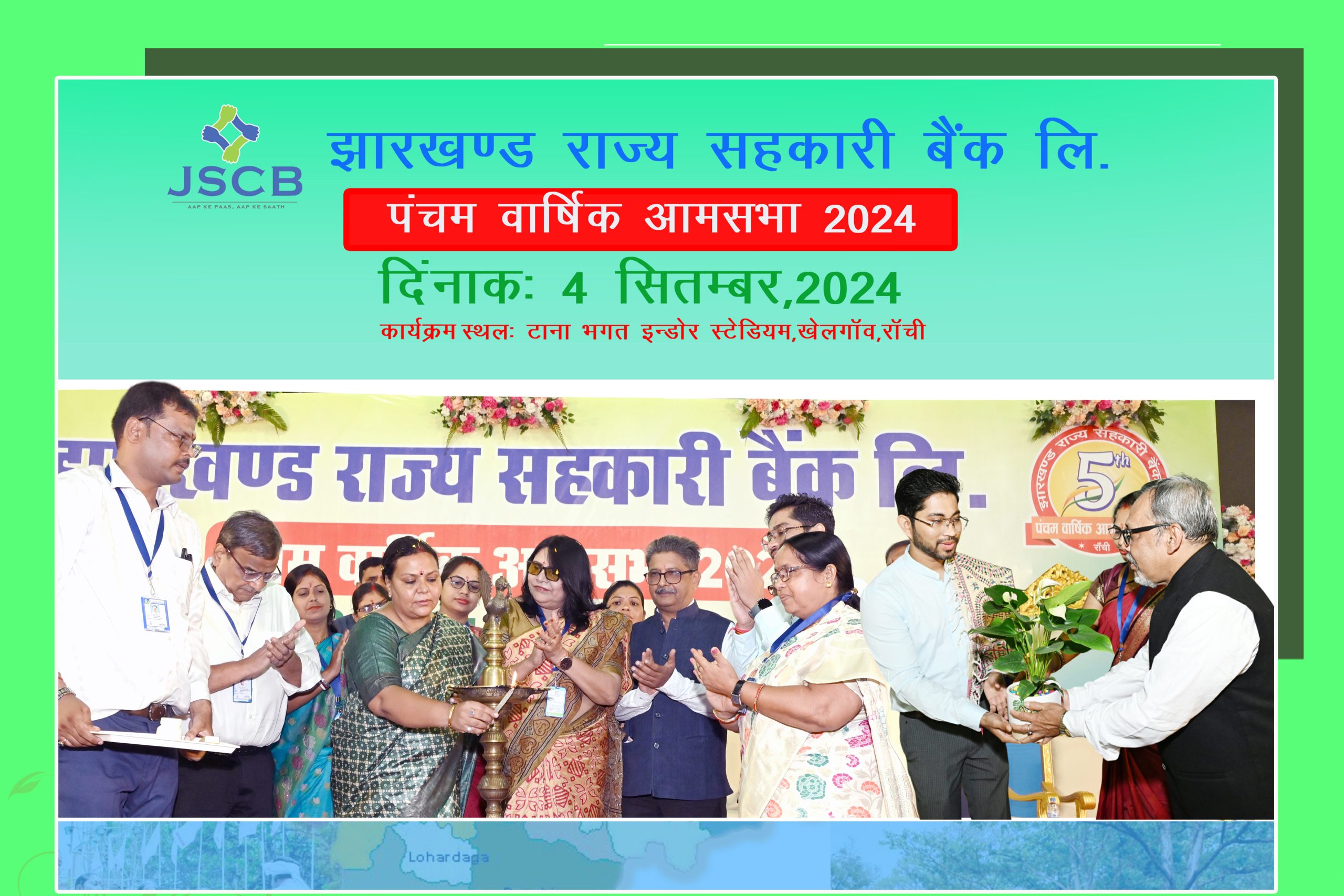Financial Inclusion through Business Correspondents – Jharkhand State Cooperative Bank Limited

Empowering Rural Jharkhand: Financial Inclusion Through Business Correspondents
Problem
- Difficulty in serving distant rural populations due to the lack of physical banking infrastructure.
- Challenges in delivering banking services to the last mile of underserved populations.
- Inefficiency in implementing state and central government schemes, leaving socio-economically deprived sections unreached.
- Lack of socio-economic empowerment of the rural masses due to financial exclusion.
- Persistent financial illiteracy among the masses hinders economic participation.
Solution
- Development and approval of a robust Financial Inclusion-Business Correspondent (FI-BC) channel architecture.
- Technological tools like tablets, biometric scanners, and Bluetooth printers were deployed and later upgraded to PoS and advanced micro-ATMs.
- Procurement of cost-effective devices through an open tender process for scalability and efficiency.
- Pilot testing of the solution, followed by full-scale deployment after successful implementation.
- Incorporation of cooperative societies (e.g., LAMPS, PACS, Dairy, Fishery Societies) for wider coverage under the “Sahkaar se Samriddhi” initiative.
Outcomes
- Creation of large-scale employment opportunities for rural youth in Jharkhand.
- Achieved financial inclusion for previously underserved rural masses.
- Increased bank deposits by attracting low-cost savings from new account holders.
- Delivered doorstep banking services, particularly benefiting the poor and senior citizens.
Enhanced the credibility, reach, and operational success of the Jharkhand State Cooperative Bank.
Challenges
- Difficulty in obtaining approvals for a novel concept.
- Selecting cost-effective and efficient micro-hardware devices.
- Ensuring the devices met the required specifications.
- Addressing cybersecurity for banking transactions.
- Simplifying operations for Business Correspondents (BCs).
Innovations
- Gradual upgrades from tablets to advanced micro-ATMs with enhanced security.
- Leveraged UIDAI guidelines for service upgrades.
- Introduced diverse functionalities like account opening and fund transfers.
- Integrated dairy and fishery societies into the cooperative banking system.
- Enabled direct service delivery, aligning with government missions like “Sahkaar se Samriddhi.”
SKOCH Award Nominee
Category: Banks
Sub-Category: Leadership – Financial Inclusion
Project: Financial Inclusion through Business Correspondents
Start Date: 0-18-2014
Organisation: Jharkhand State Cooperative Bank Limited
Respondent: Bibha Singh
http://jscb.gov.in/
Level: BFSI – 4
Video
See Presentation
Gallery
Case study
Empowering Rural Jharkhand: Financial Inclusion Through Business Correspondents
Introduction
The Jharkhand State Cooperative Bank Limited (JSCB) launched the Financial Inclusion through Business Correspondents (FI-BC) project in 2014 to address systemic challenges in delivering banking services to rural areas. With a vision to integrate socio-economically marginalized communities into the formal banking system, this initiative leveraged technology and innovative delivery mechanisms. The project aligns with the national mission of “Sahkaar se Samriddhi” and underscores the importance of financial inclusion as a driver of socio-economic empowerment.
Identified Problems
JSCB’s FI-BC initiative aimed to address the following critical issues:
- Inadequate Banking Infrastructure: Physical banking services were inaccessible to distant rural populations due to logistical constraints.
- Service Delivery Gap: Reaching the last mile of the population with essential banking services was challenging.
- Scheme Implementation Hurdles: Many socio-economically deprived individuals could not access benefits under state and central government schemes.
- Socio-Economic Exclusion: A lack of financial inclusion resulted in stagnated socio-economic progress for marginalised communities.
- Financial Illiteracy: Many rural residents lacked basic financial knowledge, hindering their participation in formal financial systems.
Objectives and Goals
The FI-BC project was guided by the following objectives:
- Deliver banking services to rural masses efficiently.
- Implement a robust, sustainable micro-payment system leveraging the latest technologies.
- Offer multimodal banking services, including account opening, cash deposit/withdrawal, fund transfer, and balance inquiry.
- Integrate rural communities into various Direct Benefit Transfer (DBT) schemes of the government.
- Foster sustainable socio-economic empowerment through comprehensive financial inclusion.
Implementation Process
The deployment of the FI-BC initiative involved a phased and structured approach:
- Solution Design and Approval: The project’s architecture was developed, followed by the necessary approvals from the bank’s governing board.
- Pilot Testing: A prototype of the system, incorporating tablets, biometric scanners, and Bluetooth printers, was rolled out for pilot implementation in 2014.
- Technology Upgrades: Over the years, the system evolved with the introduction of PoS machines (2016), advanced Micro-ATMs with enhanced security features (2017), and further improvements in 2023.
- Hardware Procurement: Devices were sourced through an open tender process to ensure cost-effectiveness and adherence to specifications.
- Full-Scale Deployment: Post-pilot success, the project was expanded to include 1,800 business correspondents (BCs) from local cooperative societies such as LAMPS and PACS.
Challenges Faced
The implementation of the FI-BC project encountered several challenges:
- Conceptual Hurdles: Obtaining approval for the novel solution required significant advocacy.
- Hardware Selection: Identifying cost-effective, efficient devices posed initial difficulties.
- Procurement Complexities: Ensuring the procurement of devices that met precise specifications was a meticulous process.
- Transaction Security: Securing banking operations in a technologically evolving environment required robust mechanisms.
- Ease of Use: Designing user-friendly interfaces for BCs was critical to operational success.
Key Features of the Solution
The FI-BC system combined innovative technology with grassroots-level engagement to create a sustainable banking model:
- Technological Backbone: The system employed advanced Micro-ATM devices with biometric authentication and security features, compliant with cyber security guidelines.
- Local Involvement: LAMPS and PACS societies were integral to service delivery, ensuring local acceptance and accessibility.
- Comprehensive Services: The solution offered a range of services, from basic banking to integration with DBT schemes.
- Scalability: The modular approach allowed the inclusion of additional cooperative societies, such as dairy and fishery groups, under the broader mission of “Sahkaar se Samriddhi.”
- Doorstep Banking: Rural populations benefited from banking services delivered directly to their homes.
Outcomes and Impact
The FI-BC project delivered significant socio-economic and institutional benefits:
- Employment Generation: The initiative created large-scale job opportunities, engaging 1,800 business correspondents.
- Financial Inclusion: Marginalized rural populations gained access to formal banking, fostering economic inclusion.
- Increased Deposits: The bank’s deposit base grew as low-cost savings were mobilized effectively.
- Improved Accessibility: Doorstep service delivery particularly benefited vulnerable groups, including senior citizens and the economically disadvantaged.
- Enhanced Credibility: The project strengthened JSCB’s reputation and reach, establishing it as a key enabler of financial inclusion in Jharkhand.
Lessons Learned
The project underscored the importance of innovation and strategic planning in addressing complex challenges. Key takeaways include:
- Stakeholder Engagement: Collaborating with local cooperative societies enhanced community trust and project adoption.
- Technological Adaptability: Continuous upgrades in hardware and software were critical to sustaining operational efficiency.
- Training and Support: Providing comprehensive training to business correspondents ensured smooth implementation.
- Scalability: Modular design enabled the project to expand its scope effectively.
- Policy Alignment: Aligning the initiative with government schemes maximized its impact and reach.
Future Prospects
Building on its success, JSCB plans to introduce additional services such as daily deposit schemes and Aadhaar-based banking. The bank also aims to integrate PMJJBY and PMSBY schemes, broadening the project’s coverage and benefits.
Conclusion
The FI-BC project of JSCB exemplifies the transformative potential of technology-driven financial inclusion. By addressing systemic gaps and empowering rural communities, the initiative has not only advanced socio-economic development in Jharkhand but also set a benchmark for similar efforts nationwide. Its scalable and sustainable model serves as a valuable case study for leveraging innovation to bridge financial divides and foster inclusive growth.
For more information, please contact:
Bibha Singh at chairman@jscb.gov.in
(The content on the page is provided by the Exhibitor)







